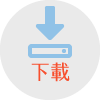簡易檢索 / 詳目顯示
| 研究生: |
王婕 Chieh - Wang |
|---|---|
| 論文名稱: |
適用於急門診流程的安全RFID醫療資訊系統之設計 On design of a Secure RFID-based e-Health System for Outpatient Clinic Process and Emergency Care Process |
| 指導教授: |
羅乃維
Nai-Wei Lo |
| 口試委員: |
吳宗成
Tzong-Chen Wu 葉國暉 KUO-HUI YEH |
| 學位類別: |
碩士 Master |
| 系所名稱: |
管理學院 - 資訊管理系 Department of Information Management |
| 論文出版年: | 2013 |
| 畢業學年度: | 101 |
| 語文別: | 英文 |
| 論文頁數: | 43 |
| 中文關鍵詞: | 無線射頻識別 、安全性 、隱私性 、醫療資訊系統 |
| 外文關鍵詞: | RFID, Privacy, Security, e-Health |
| 相關次數: | 點閱:397 下載:39 |
| 分享至: |
| 查詢本校圖書館目錄 查詢臺灣博碩士論文知識加值系統 勘誤回報 |
傳統醫療流程中,人工作業方式,例如填寫病患資料及核對病人身分時,造成的人為作業疏失和時間浪費時有所聞,而近年來,有許多研究指出透過無線射頻識別 (Radio Frequency Identification, RFID)技術可以改善這樣的狀況,此技術為一種非接觸式的自動化識別科技,透過無線射頻來辨識標籤內容資訊,可以有效降低人為疏失以及增加藥物管理安全。
雖然以RFID技術為基礎的醫療流程比一般傳統的流程來的更有效率,但在資訊傳遞的過程中,可能會受到惡意者進行各種資訊安全攻擊,進而引發不當用藥或其他醫療疏失等。因此基於以上緣由,在此篇論文當中,為了抵擋有心人士的惡意攻擊行為,造成敏感的病患資訊外洩,以及為了提升醫療作業流程的效率,我們提出了兩個新的醫療流程,分別為門診與急診流程,此類RFID流程可降低藥物管理疏失,提升醫療流程效率,更採用匿名性驗證的方式來減少外來攻擊者的攻擊,並將主要流程劃分為多個步驟,內容包含RFID標籤綁定議題,病人身份採用匿名性身分驗證來提升隱私安全,以及使用鑑別簽章來確保資料完整性,更針對藥物管理方面做識別鑑定。
為了印證本論文所提出的RFID流程架構具有可行性,我們透過近端通訊(Near Field Communication , NFC)技術實作流程的方法,包含標籤綁定、匿名性身份驗證、資料儲存方式等,分別建立兩個應用程式於伺服器端和客戶端,使用上述方法來確保病患隱私安全以及增加整體流程效率,做為日後RFID採用於醫療系統架構中設計之基礎。
Traditional medical process, manual operation, for instance, fill out the patient information and to check the patient's identity, caused by human operation mistakes and wasted time. In recent years, many researches design RFID-based solutions ,this technology is contactless automatic identification technology. Using radio frequency signal to identify the information of RFID tags. Effectively reduce human error and improve medicine management security.
Although RFID-based procedure is more efficient than traditional process, patient’s information may be attacked during the data transmission period and this will cause inappropriate medication use or other medical errors. Therefore, based on the above reason, In order to prevent information leakage on patients form malicious attackers, two new processes, outpatient clinic process and emergency care process, are proposed. The goals of these new processes are to reduce medication errors, enhance patient privacy and improve hospital efficiency on patient clinic processes. To achieve those goals, both new processes are divided into several consecutive steps and associated who anonymous RFID authentication mechanism, identity signature technology to ensure patient privacy and information security.
In order to prove that the proposed of our RFID process architecture is feasible. We using NFC (Near Field Communication ) to implement our methods, including RFID tag binding , anonymous RFID authentication mechanism , data storage. Create two applications in server and client.
Using the above methods to ensure patient privacy and increase the efficiency of the overall process, as a basis for future RFID using in the medical system architecture design.
[1] R. Agrawal, C. Johnson, “Securing Electronic Health Records without Impeding the Flow of Information,” International Journal of Medical Informatics, vol.76, pp.471-479, 2007.
[2] D. Boyd, C. Hosner, D. A. Hunscher, B. D. Athey, D. J. Clauw, L. A. Green, “An Honest Broker mechanism to maintain privacy for patient care and academic medical research,” International Journal of Medical Informatics, vol. 76, pp. 407-411, 2007.
[3] C.-L. Chen, C.-Y. Wu, “Using RFID Yoking Proof Protocol to Enhance Inpatient Medication Safety,” Journal of Medical System, DOI: 10.1007/s10916-011-9763-5, 2011.
[4] H.-Y. Chien, C.-C. Yang, T.-C. Wu, “Two RFID-based Solutions to Enhance Inpatient Medication Safety,” Journal of Medical System, vol. 35, no. 3, pp.369-375, 2010.
[5] Q.P. Lin, Q.G. Zhang, “ECC-based Grouping-Proof RFID for Inpatient Medication Safety,” Journal of Medical System, DOI: 10.1007/s10916-011-9757-3, 2011.
[6] C.-C. Lo, C.-H. Chen, D.-Y. Cheng, H.-Y. Kung, “Ubiquitous Healthcare Service System with Context-awareness Capability: Design and Implementation,” Expert Systems with Applications, vol.38, pp.4416-4436, 2011.
[7] P. Najera, J. Lopez, R. Roman, “Real-time Location and Inpatient Care Systems based on Passive RFID,” Journal of Network and Computer Applications, vol. 34, pp.980-989, 2011.
[8] K. Ohashi, S. Ota, L. Ohno-Machado, H. Tanaka, “Smart Medical Environment at the Point of Care: Auto-Tracking Clinical Interventions at the Bed Side using RFID Technology,” Computers in Biology and Medicine, vol. 40, pp.545-554, 2010.
[9] P. Peris-Lopez, A. Orfila, A. Mitrokotsa, J. C.A. van der Lubbe, “A Comprehensive RFID Solution to Enhance Inpatient Medication Safety,” International Journal of Medical Informatics, vol. 80, issue 1, pp.13-20, 2011.
[10] A.-K. Wickboldt, S. Piramuthu, “Patient Safety Through RFID: Vulnerabilities in Recently Proposed Grouping Protocols,” Journal of Medical System, DOI: 10.1007/s10916-010-9487-y, 2010.
[11] S.H. Wu, K.F. Chen, Y.F. Zhu, “A Secure Lightweight RFID Binding Proof Protocol for Medication Errors and Patient Safety,” Journal of Medical System, DOI: 10.1007/s10916-011-9750-x, 2011.
[12] Y.-C. Yen, N.W. Lo, T.-C. Wu, “Two RFID-Based Solutions for Secure Inpatient Medication Administration,” Journal of Medical System, DOI 10.1007/s10916-011-9753-7, 2011.
[13] Y.-C. Yu, T.-W. Hou, T.-C. Chiang, “Low Cost RFID Real Lightweight Binding Proof Protocol for Medication Errors and Patient Safety,” Journal of Medical System, DOI: 10.1007/s10916-010-9546-4, 2010.
[14] P. Ruotsalainen, “Privacy and Security in Teleradiology,” European Journal of Radiology, vol. 73, pp. 31-35, 2010.
[15] ISO 27799, Health Informatics – Security Management in Health Using ISO/IEC 17799.
[16] G. L. Kreps, L. Neuhauser, “New Directions in eHealth Communicaiton: Opportunities and Chanllenges,” Patient Education and Counseling, vol. 78, pp. 329-336, 2010.
[17] S Ajami, MW Carter, “The advantages and disadvantages of Radio Frequency Identification (RFID) in Health-care Centers; approach in Emergency Room (ER) ” , Pakistan Journal of Medical Sciences, 2013.
[18] R Safdari, E Maserat, E Maserat, “RFID Technology in Health Environment Opportunities and Challenges for Modern Cancer Care”, Asian Pacific Journal of Cancer Prevention, Vol 13, 2012.
[19] Harald Kostinger, Martin Gobber, Thomas Grechenig, Barbara Tappeiner, Wolfgang Schramm, “Developing a NFC Based Patient Identification and Ward Round System for Mobile Devices Using the Android Platform”, IEEE Point-of-Care Healthcare Technologies (PHT),2011
